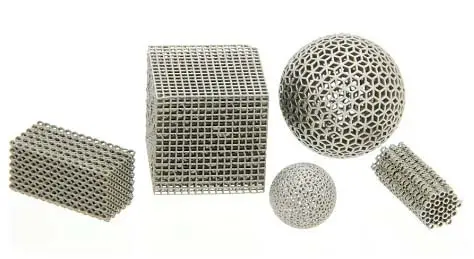The Benefits of 3D Printing Metal
Metal 3D printing has many benifits, but three are the most impportant comparred with other manufacturing methods. This article will show you the three benifits.
- The cost per part is the same for both small and large batches.
- Complex parts are no more difficult to 3D print than simple ones.
- Metal 3D printing can produce parts that cannot be made by any other manufacturing method.
First, the cost per part is the same for both low- and high-volume metal 3D printing.
As production increases, nearly every manufacturing method available becomes cheaper on a cost/piece/part basis. Casting, machining and forming (among others) are good examples. In small to medium batches, they can be very expensive to implement. On a large scale, however, they are the cheapest way to make parts. This is partly due to the difference between overhead (the cost incurred to make the part) and unit cost (the cost of making the extra part).
Casting and injection molding are excellent examples of high overhead/low unit cost – in small quantities, the discrete cost of the tooling required drives part costs to unreasonable levels. However, due to the extremely low additional cost per unit, the overall part cost becomes very cheap when it comes to mass production.
3D printing metal turns this around by using a highly automated process that incurs little overhead. Additional upfront labor required to print the 100th part is minimal, and the system uses the same amount of consumables on each part.
Second, in metal 3D printing, complexity is free
Years of manufacturing training enable most engineers to hard-code parts that are as simple to manufacture as possible. The reasoning behind this is simple and economical: for most manufacturing processes, increased complexity equals increased cost. Complex parts require more work to program machines, more advanced machines to build them, and more time to complete them. In most manufacturing methods, this remains consistent. Everything from rolling mills to castings is affected. Metal 3D printing is not.
Almost all metal fabrication processes rely on subtractive processes (even casting requires molds). Traditionally manufactured parts start with a piece of metal, and then a machine (usually a mill or something similar) removes the material to make the final part. For complex parts, performing these operations can be very difficult and time-consuming. The result is expensive parts that take a long time to manufacture and waste a lot of material.
Due to the highly automated additive process, the cost of metal 3D printing depends on part size rather than complexity. The toolpath is done by 3D printing slicing software, eliminating the labor and CAM costs inherent in traditional methods. No programming is required, only a small amount of preparation responsibility is required, and the cost of the part is only the material and maintenance of the machine. The additive manufacturing process creates very little material waste and movement during part manufacture. If the design is printable, there are no additional costs associated with complexity.
Third, 3D printers can make parts that other machines can’t
Every manufacturing method has limitations—and 3D printing is no exception. However, due to its unique process, metal 3D printing can create parts that other platforms cannot. The result is a part that can truly be optimized for its use case without being limited by traditional manufacturing constraints. These parts range from ultra-complex (for example, topology-optimized parts in generative design software) to process-optimized parts (for example, injection molds with contoured cooling channels or custom manifold designs). Most of these “impossible parts” share one key characteristic: complex curves, shapes or cavities that simply cannot be removed from the material by conventional processes.
The breadth of impossible parts that can be fabricated on metal 3D printers has not been fully explored, so its applications are not fully understood. As metal 3D printing is adopted by the manufacturing masses, we may see a new design paradigm centered on the unique advantages of 3D printing as a process. Metal 3D printing certainly offers another approach to manufacturing, opening up new opportunities that were previously prohibitive in cost or design. Metal 3D printing will become an invaluable tool for engineers, designers and manufacturers worldwide.

